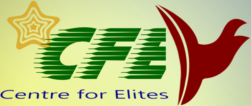COURSE AIM:
Theories and Principles of Education syllabus aims at equipping students with relevant knowledge, attitudes and skills that will enable them to become professional teachers, capable of completely performing various roles within the teaching service at Primary level.
COURSE OBJECTIVES
At the end of the course, students should be able to:
- Define the formal, informal and non-formal type of educations
- Describe the characteristics of education in terms of goals, aims, objectives and functions in society
- Discuss practical ways of class management and control
- Discuss the need of planning and preparation by the teacher
- Prepare schemes of work, lesson plan and records of work
- Explain different approaches to teaching
- Discuss student teaching practice (STP) as an important component in the teacher education program
- Apply various teaching methods and techniques in both peer teaching and real classroom situations
- Design different types of questions, test and other tools/ instrument for assessing learning
- Analyse different theories of learning
- Discuss the qualities of a good teaching
- Explain the role of a teacher, head of department and head teacher/ school manager in school administration
- Explain the administrative structure of the MOE, including functions of education boards and PTAs
- Explain the structure and functions of the teaching service commission, trade union and profession (subject) associations
- Discuss education planning and implementation at national level.
- Discuss curriculum and discuss curriculum planning and development
CONTENT
Introduction to theory and practice education
Definition or meaning of theory and practice
Nature and relevance of theory and practice to teacher education
Definition/ meaning of education
Types of education- formal, informal and non-formal
Characteristics of education
Functions of education
Goals, aims and objectives in education
Principles of education
Conservative and liberal approaches to education
The school and classroom
General meaning of school
School as an organization
School as a model of the community
Classroom as a physical learning environment
Classroom organization
Class management and control
Planning for teaching
Meaning and importance of planning in teaching
Syllabus
Schemes of work
The lesson plan
Records of work
Teaching and learning materials
Teaching aids
Methods of teaching
Definition: teaching methods and technique
Types or groups of methods: transmission, critical heuristic, creative, information gathering and social learning methods
Child and teacher- centred approaches to teaching
Some common methods and techniques: lecture, question answer, discussion, group work, demonstration/ experiments, projects, dramatization and role play.
Special education needs
Principles of learning
Definition of learning
Theories of learning
Factors of learning
The process of learning
Stages in learning
Motivation of learners
Assessing and evaluating learning
Meaning and importance of assessment and evaluation in teaching and learning
Types of test: placement, formative, diagnostic and summative
Criteria of good test
Public examinations
The examinations council of Zambia
Education management and administration
Definition of management and administration
Types of leadership
School administration
Qualities of a good administrator/ a good leader
The roles of a teacher, head of department and head teacher of school manager in school administration
The teacher profession or career
Definitions/ meaning of ‘profession’ and ‘career’ in relation to teaching
Qualities of a good teacher
The role of a teacher in the community
Discipline: punishment types and use
Education planning and implementation
Meaning and importance of education planning at national level
Priorities and strategies in educational
Problems of education planning and implementation in development countries in Zambia
Impact of educational expansion on the quality of education
Students teaching practice(STP)
Purpose and organization of STP
Preparation for STP what to take-documents, books, materials. Assignments.
After STP what to bring back-documents, assignments, reports, etc.
Extra-curricular activities
The teacher, the law and national organization
Administrative structure of the ministry of education – DEBS, PEO, head Quarters, education boards, PTAs.
The teaching service commission
Trade Unions in the teaching service
Professional (subject Associations)
Conditions of service
The education act. 1966 and 2000 (in craft)Curriculum planning and development
Definition of planning
Curriculum and society
Curriculum development
Types of curriculum
Curriculum change
The curriculum development centre (CDC)Cross-cutting issues in education in Zambia
Equity in educational provision
Special education needs
Gender in educations
Democracy in educations
Environmental and education
METHODS OF TEACHING
- Two hours of lecture per week
- One hour of tutorials per week
ASSESSMENT
2 assessments of equal weight 10%
1 seminar presentation 10%
1 test 10%
Project 10
Final examinations 60%
Total 100%
PRESCRIBED READINGS
Duming, P.A et al (1990) Education for the Student Teacher(books 1, 2 and 3), Cape town: Longman
Farrant, J.S. (1993) Principles and Practices of Education. London: Longman.
Kasambila. K.P. (1995) Teaching Methods. Harare: College publishers.
RECOMMENDED READINGS
Castle. E.B. (1971) Principles of Education for Teachers in Africa. Nairobi: oxford edition university press.
Ministry of education (1996) Educating Our Future. National policy of education Lusaka: ZEPH
Ministry of education (2001) Teachers curriculum manual. Lusaka: CDC
Obania. P. (1980) General method of teaching. London: Macmillan
Urevbu. A. (1994) Curriculum Studies. Lagos: Longman
